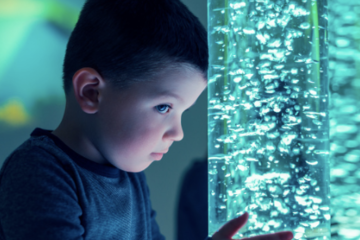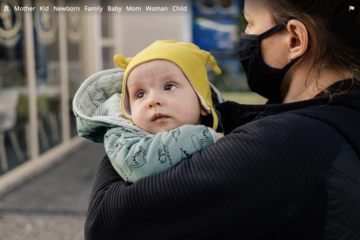We found 96 results that contain "learning"
Posted on: #iteachmsu

DISCIPLINARY CONTENT
Cooperative Learning
Carefully structured cooperative learning groups in which each student is assigned a role and has clear expectations for desired outcomes are very helpful for students with ADHD. The more structured the cooperative activity, the more likely it is that these students will succeed.
Posted by:
Chathuri Super admin..

Posted on: #iteachmsu


Cooperative Learning
Carefully structured cooperative learning groups in which each stud...
Posted by:
DISCIPLINARY CONTENT
Monday, Sep 14, 2020
Posted on: #iteachmsu

DISCIPLINARY CONTENT
Cooperative Learning
Carefully structured cooperative learning groups in which each student is assigned a role and has clear expectations for desired outcomes are very helpful for students with ADHD. The more structured the cooperative activity, the more likely it is that these students will succeed.
Authored by:
Chathu
Posted on: #iteachmsu

Cooperative Learning
Carefully structured cooperative learning groups in which each stud...
Authored by:
DISCIPLINARY CONTENT
Monday, Sep 14, 2020
Posted on: #iteachmsu

DISCIPLINARY CONTENT
Support Student Learning in a Digital Learning Environment
Educator provides evidence
of their understanding of communication and outlines and provides evidence of a lesson that uses technology to support students’ use of communication in learning.
Method Components
What are the 4Cs?
The 4Cs for 21st century learning are Creativity, Critical Thinking, Communication, and Collaboration. They are part of the framework for 21st Century Learning and are designed to support student learning in today’s world and are skills they can use in college and career.
What is communication (and what isn’t it)?
The P21 framework emphasizes effective use of oral, written, and nonverbal communication skills for multiple purposes (e.g., to inform, instruct, motivate, persuade, and share ideas). It also focuses on effective listening, using technology to communicate, and being able to evaluate the effectiveness of communication efforts—all within diverse contexts (adapted from P21). Note that working in partners is a great way to collaborate or build shared understanding but a critical part of communication is sharing with an authentic audience.
Example strategies that use technology to support communication in the classroom:
Host a TED-style conference or showcases for your students to present original ideas on a topic of interest to them to an authentic, external audience. Record and post the videos to a youtube stream.
Provide opportunities to listen and ask questions through back channel tools like Today’s Meet or even Twitter.
Have your students publish their work through blogs, by creating websites, and by building other online resources that are shared with authentic audiences.
For other ideas see the resources below.
of their understanding of communication and outlines and provides evidence of a lesson that uses technology to support students’ use of communication in learning.
Method Components
What are the 4Cs?
The 4Cs for 21st century learning are Creativity, Critical Thinking, Communication, and Collaboration. They are part of the framework for 21st Century Learning and are designed to support student learning in today’s world and are skills they can use in college and career.
What is communication (and what isn’t it)?
The P21 framework emphasizes effective use of oral, written, and nonverbal communication skills for multiple purposes (e.g., to inform, instruct, motivate, persuade, and share ideas). It also focuses on effective listening, using technology to communicate, and being able to evaluate the effectiveness of communication efforts—all within diverse contexts (adapted from P21). Note that working in partners is a great way to collaborate or build shared understanding but a critical part of communication is sharing with an authentic audience.
Example strategies that use technology to support communication in the classroom:
Host a TED-style conference or showcases for your students to present original ideas on a topic of interest to them to an authentic, external audience. Record and post the videos to a youtube stream.
Provide opportunities to listen and ask questions through back channel tools like Today’s Meet or even Twitter.
Have your students publish their work through blogs, by creating websites, and by building other online resources that are shared with authentic audiences.
For other ideas see the resources below.
Authored by:
NC state
Posted on: #iteachmsu

Support Student Learning in a Digital Learning Environment
Educator provides evidence
of their understanding of communication ...
of their understanding of communication ...
Authored by:
DISCIPLINARY CONTENT
Monday, Jan 11, 2021
Posted on: #iteachmsu

NAVIGATING CONTEXT
Support Student Learning in a Digital Learning Environment
What is communication (and what isn’t it)?
The P21 framework emphasizes the effective use of oral, written, and nonverbal communication skills for multiple purposes (e.g., to inform, instruct, motivate, persuade, and share ideas). It also focuses on effective listening, using technology to communicate, and being able to evaluate the effectiveness of communication efforts—all within diverse contexts (adapted from P21). Note that working in partners is a great way to collaborate or build shared understanding but a critical part of communication is sharing with an authentic audience.
Example strategies that use technology to support communication in the classroom:
Host a TED-style conference or showcases for your students to present original ideas on a topic of interest to them to an authentic, external audience. Record and post the videos to a youtube stream.
Provide opportunities to listen and ask questions through backchannel tools like Today’s Meet or even Twitter.
Have your students publish their work through blogs, by creating websites, and by building other online resources that are shared with authentic audiences.
For other ideas see the resources below.
https://youtu.be/KUM4AECEcUA
The P21 framework emphasizes the effective use of oral, written, and nonverbal communication skills for multiple purposes (e.g., to inform, instruct, motivate, persuade, and share ideas). It also focuses on effective listening, using technology to communicate, and being able to evaluate the effectiveness of communication efforts—all within diverse contexts (adapted from P21). Note that working in partners is a great way to collaborate or build shared understanding but a critical part of communication is sharing with an authentic audience.
Example strategies that use technology to support communication in the classroom:
Host a TED-style conference or showcases for your students to present original ideas on a topic of interest to them to an authentic, external audience. Record and post the videos to a youtube stream.
Provide opportunities to listen and ask questions through backchannel tools like Today’s Meet or even Twitter.
Have your students publish their work through blogs, by creating websites, and by building other online resources that are shared with authentic audiences.
For other ideas see the resources below.
https://youtu.be/KUM4AECEcUA
Authored by:
Friday Institute at NC State

Posted on: #iteachmsu


Support Student Learning in a Digital Learning Environment
What is communication (and what isn’t it)?
The P21 framework emphas...
The P21 framework emphas...
Authored by:
NAVIGATING CONTEXT
Thursday, Jan 14, 2021
Posted on: #iteachmsu

ASSESSING LEARNING
Communication to Support Student Learning in a Digital Learning Environment
Key Method
Educator provides evidence of their understanding of communication and outlines and provides evidence of a lesson that uses technology to support students’ use of communication in learning.
Method Components
What are the 4Cs?
The 4Cs for 21st century learning are Creativity, Critical Thinking, Communication, and Collaboration. They are part of the framework for 21st Century Learning and are designed to support student learning in today’s world and are skills they can use in college and career.
What is communication (and what isn’t it)?
The P21 framework emphasizes effective use of oral, written, and nonverbal communication skills for multiple purposes (e.g., to inform, instruct, motivate, persuade, and share ideas). It also focuses on effective listening, using technology to communicate, and being able to evaluate the effectiveness of communication efforts—all within diverse contexts (adapted from P21). Note that working in partners is a great way to collaborate or build shared understanding but a critical part of communication is sharing with an authentic audience.
Educator provides evidence of their understanding of communication and outlines and provides evidence of a lesson that uses technology to support students’ use of communication in learning.
Method Components
What are the 4Cs?
The 4Cs for 21st century learning are Creativity, Critical Thinking, Communication, and Collaboration. They are part of the framework for 21st Century Learning and are designed to support student learning in today’s world and are skills they can use in college and career.
What is communication (and what isn’t it)?
The P21 framework emphasizes effective use of oral, written, and nonverbal communication skills for multiple purposes (e.g., to inform, instruct, motivate, persuade, and share ideas). It also focuses on effective listening, using technology to communicate, and being able to evaluate the effectiveness of communication efforts—all within diverse contexts (adapted from P21). Note that working in partners is a great way to collaborate or build shared understanding but a critical part of communication is sharing with an authentic audience.
Authored by:
Greg

Posted on: #iteachmsu


Communication to Support Student Learning in a Digital Learning Environment
Key Method
Educator provides evidence of their understanding of com...
Educator provides evidence of their understanding of com...
Authored by:
ASSESSING LEARNING
Thursday, Dec 31, 2020
Posted on: #iteachmsu

DISCIPLINARY CONTENT
Digital Collaborative Learning for the 21st Century 2.0 (Learning Community for AY2023-2024)
Digital Collaborative Learning for the 21st Century 2.0 (Learning Community for AY2023-2024)
Authored by:
906

Posted on: #iteachmsu


Digital Collaborative Learning for the 21st Century 2.0 (Learning Community for AY2023-2024)
Digital Collaborative Learning for the 21st Century 2.0 (Learning Community for AY2023-2024)
Authored by:
DISCIPLINARY CONTENT
Monday, Sep 25, 2023
Posted on: #iteachmsu

Teaching and Learning in Early Childhood Education and Care
Early education ensures free, integral and harmonious development of the child's personality, according to his rhythm and needs. The education provided has to ensure the differentiated stimulation of children, aiming the intellectual, emotional, social and physical development of each child and targeting to achieve the following results of early education (from birth to 6/7 years old):
The free, integral and harmonious development of the child's personality, according to his own pace and general needs, supporting his autonomous and creative training.
Development of the capacity to interact with other children, with adults and with the environment to acquire new knowledge, skills, attitudes and behaviours; encouraging exploration, exercises, tests and experiments, as autonomous learning experiences.
The discovery, by each child, of his/her own identity and autonomy and the development of a positive self-image.
Supporting the child in the acquisition of knowledge, abilities, skills and attitudes required for his school entry and throughout life.
All activities with young children should respect child's right to play - viewed as a form of activity, method, procedure and means of achieving educational approaches at early ages, as well as a method of stimulating the capacity and creativity of the child, as a right of him and as an opening to freedom to choose, according to his/her own needs.
The free, integral and harmonious development of the child's personality, according to his own pace and general needs, supporting his autonomous and creative training.
Development of the capacity to interact with other children, with adults and with the environment to acquire new knowledge, skills, attitudes and behaviours; encouraging exploration, exercises, tests and experiments, as autonomous learning experiences.
The discovery, by each child, of his/her own identity and autonomy and the development of a positive self-image.
Supporting the child in the acquisition of knowledge, abilities, skills and attitudes required for his school entry and throughout life.
All activities with young children should respect child's right to play - viewed as a form of activity, method, procedure and means of achieving educational approaches at early ages, as well as a method of stimulating the capacity and creativity of the child, as a right of him and as an opening to freedom to choose, according to his/her own needs.
Posted by:
Chathuri Hewapathirana

Posted on: #iteachmsu

The Role of Nonclassroom Spaces in Living-Learning ... - ERIC
The coronavirus pandemic continues to hit the US economy, with another 5.2 million Amercians seeking unemployment benefits last week.
More than 20 million Americans have applied for benefits in the last month.
Economists believe that the U.S. economy contracted at its sharpest rate since World War II in the first quarter of the year.
Another 5.2 million more Americans sought unemployment benefits last week, lifting total filings for claims over the past month above an astounding 20 million, which would underscore the deepening economic slump caused by the novel coronavirus outbreak.
More than 20 million Americans have applied for benefits in the last month.
Economists believe that the U.S. economy contracted at its sharpest rate since World War II in the first quarter of the year.
Another 5.2 million more Americans sought unemployment benefits last week, lifting total filings for claims over the past month above an astounding 20 million, which would underscore the deepening economic slump caused by the novel coronavirus outbreak.
Posted by:
Chathuri Hewapathirana


